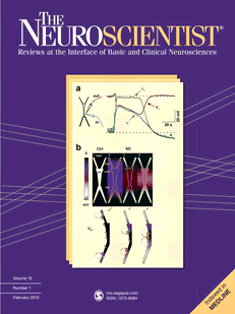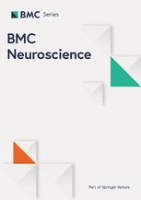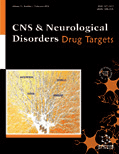
Fluids and Barriers of the CNS
Scope & Guideline
Advancing Neuroscience Through Fluid Dynamics and Barriers
Introduction
Aims and Scopes
- Cerebrospinal Fluid Dynamics:
Research on the production, flow, and absorption of cerebrospinal fluid, including its role in maintaining intracranial pressure and its implications for conditions such as hydrocephalus. - Blood-Brain Barrier Integrity:
Investigating the mechanisms that regulate the permeability and function of the blood-brain barrier, particularly in the context of neurological diseases and therapeutic delivery. - Neuroinflammation and Immune Response:
Exploring the role of immune responses and neuroinflammation in CNS disorders, including the impact of various cytokines and immune cells on cerebrospinal fluid dynamics and blood-brain barrier function. - Modeling and Imaging Techniques:
Utilizing advanced imaging technologies and modeling techniques to study cerebrospinal fluid dynamics and blood-brain barrier properties, contributing to a better understanding of CNS pathophysiology. - Therapeutic Approaches:
Focusing on innovative therapeutic strategies aimed at enhancing drug delivery to the CNS, including the use of nanoparticles, ultrasound, and other methods to modulate blood-brain barrier permeability. - Aging and Developmental Biology:
Examining how aging affects cerebrospinal fluid dynamics and blood-brain barrier integrity, as well as the implications for neurodegenerative diseases.
Trending and Emerging
- Advanced Imaging Techniques:
There is a growing emphasis on employing advanced imaging modalities, such as 4D flow MRI and high-resolution microimaging, to study cerebrospinal fluid dynamics and blood-brain barrier integrity in real time. - In Vitro Models of the Blood-Brain Barrier:
Research is increasingly utilizing in vitro models, including iPSC-derived and organoid systems, to better mimic the blood-brain barrier and study drug delivery mechanisms in a controlled environment. - Role of the Choroid Plexus:
Emerging studies focus on the physiological and pathological roles of the choroid plexus in cerebrospinal fluid production and its involvement in neurodegenerative diseases. - Neuroinflammation and its Impact on CNS Function:
There is a trend towards exploring the relationship between neuroinflammation, cerebrospinal fluid dynamics, and neurodegenerative disorders, emphasizing the role of cytokines and immune cells. - Therapeutic Innovations for CNS Delivery:
The journal is increasingly publishing studies on innovative therapeutic strategies, including ultrasound-mediated drug delivery and nanotechnology, aimed at enhancing therapeutic efficacy in the CNS. - Aging and Neurodegeneration:
Research on the effects of aging on cerebrospinal fluid dynamics and blood-brain barrier function is gaining traction, reflecting the increasing relevance of these factors in neurodegenerative diseases.
Declining or Waning
- Basic Descriptive Studies of CNS Anatomy:
There has been a noticeable decline in purely descriptive studies focusing on the anatomy of the CNS without a direct link to functional implications or clinical relevance. - Non-Integrated Approaches to CNS Disorders:
Research that does not integrate findings from multiple disciplines, such as molecular biology, clinical studies, and imaging, appears to be waning, as the journal emphasizes more holistic and interdisciplinary methods. - Traditional Drug Delivery Methods:
Interest in conventional methods of drug delivery to the CNS is decreasing, with a shift towards more innovative approaches that enhance drug efficacy and targeting. - Static Models of Fluid Dynamics:
There is a decrease in studies using static models for cerebrospinal fluid dynamics, as more researchers adopt dynamic, in vivo, or clinically relevant models.
Similar Journals

NEUROSCIENTIST
Connecting Researchers to the Pulse of Neurological AdvancesNEUROSCIENTIST is a leading journal in the field of clinical neurology and neuroscience, published by SAGE Publications Inc. With an impressive impact factor reflected in its Q1 quartile ranking in both clinical neurology and miscellaneous neuroscience as of 2023, this journal positions itself as a crucial platform for the latest research and advancements in the neural sciences. Spanning from 1995 to 2024, NEUROSCIENTIST features a range of high-quality, peer-reviewed articles that cater to researchers, practitioners, and students alike. Although it does not offer Open Access options, the journal remains a vital resource owing to its Scopus rankings, situating it within the top percentile of its categories: ranked #28 out of 400 in clinical neurology and #15 out of 113 in general neuroscience. The journal's commitment to disseminating significant findings underlines its importance in fostering advancements in neurological understanding and treatment.

Retrovirology
Fostering Innovation in Infectious Disease ResearchRetrovirology is a prominent open-access journal published by BMC since 2004, dedicated to the field of retroviral research. With a strong focus on advancing knowledge in both infectious diseases and virology, this interdisciplinary journal has achieved a commendable ranking of Q2 in its respective categories as of 2023, reflecting its significant contribution to the scientific community. Hosted in the United Kingdom, Retrovirology serves a global audience of researchers, professionals, and students, making vital research accessible to all without barriers. The journal's emphasis on high-quality peer-reviewed articles supports the dissemination of groundbreaking findings that could shape the future of virology and related fields. With an impressive Scopus ranking, including a percentile of 65th in Medicine: Infectious Diseases, it stands out as a valuable resource for those committed to understanding and combating viral diseases. Retrovirology continues to be an essential platform for innovative research, with its open-access model ensuring that transformational science reaches the widest possible audience.

BMC NEUROSCIENCE
Exploring the Frontiers of Neuroscience ResearchBMC NEUROSCIENCE is a prominent open access journal dedicated to the dissemination of high-quality research within the dynamic and rapidly evolving field of neuroscience. Published by BMC, a well-respected leader in open access publishing, this journal facilitates the free exchange of knowledge since its inception in 2000. With the ISSN 1471-2202, BMC NEUROSCIENCE aims to address the diverse interests of the neuroscience community by covering a broad spectrum of topics, ranging from cellular and molecular neuroscience to general neurological studies, thus appealing to researchers, professionals, and students alike. Although it currently holds a Q4 ranking in Cellular and Molecular Neuroscience and a Q3 rank in miscellaneous Neuroscience categories, its commitment to advancing the understanding of brain function and disorders remains steadfast. The journal features a user-friendly Open Access model, ensuring that critical research findings are readily accessible to everyone, fostering collaboration and innovation in the field. As the journal continues to evolve towards its convergence years of 2024, it aspires to enhance its impact and global reach, making it a valuable resource for anyone interested in advancing neuroscience research.

NEUROBIOLOGY OF DISEASE
Unlocking the Mysteries of Neurological DisordersNEUROBIOLOGY OF DISEASE is a premier journal dedicated to advancing the understanding of neurological disorders and the underlying biological processes, published by Academic Press Inc, Elsevier Science. With an impressive impact factor indicative of its significance—ranked in the Q1 quartile in Neurology for 2023 and occupying the 14th rank out of 192 journals in the field of Neuroscience and Neurology—this journal serves as a critical resource for researchers, clinicians, and students alike. The journal has a rich history since its inception in 1994, continuously evolving its scope to encompass groundbreaking research and insights into neurobiological mechanisms and disease pathology. Though it currently does not provide Open Access options, NEUROBIOLOGY OF DISEASE remains a vital vessel for disseminating knowledge that significantly contributes to the field of neurology, fostering an understanding that can lead to innovative therapeutic strategies.

Journal of Neuroimmune Pharmacology
Pioneering Research in Neuroimmune PharmacologyThe Journal of Neuroimmune Pharmacology, published by Springer, is a premier academic journal dedicated to advancing the field of pharmacology intersecting with neuroscience and immunology. With an outstanding impact factor and proudly positioned in the Q1 quartile across multiple categories, this journal showcases cutting-edge research that enhances our understanding of the neuroimmune system and its pharmacological implications. Established in 2006 and continuing through 2024, it serves as a vital resource for researchers, professionals, and students alike, offering insights into the mechanisms of drug action, disease processes, and therapeutic strategies. As a testament to its excellence, the journal ranks prominently in Scopus metrics within its discipline, making it an essential platform for disseminating high-quality research that drives innovation in immunology, allergy, neuroscience, and pharmacology.

NEUROSCIENCE RESEARCH
Pioneering Research in Neural MechanismsNEUROSCIENCE RESEARCH, published by Elsevier Ireland Ltd, is a leading journal in the field of neuroscience, with a notable reputation for disseminating high-quality research that spans a variety of topics within the discipline. With an ISSN of 0168-0102 and an E-ISSN of 1872-8111, this journal serves as a vital platform for both established researchers and emerging voices in the field. Ranking in the Q2 quartile in both Medicine and Neuroscience categories, it has been recognized as a reliable source of innovative findings since its inception in 1984, with continuous publication through 2024. Although it does not currently offer Open Access options, the journal is indexed in Scopus, holding a significant position at Rank #48/113 in General Neuroscience, reflecting its contribution to advancing the understanding of neural mechanisms across various contexts. With its address anchored in Ireland, NEUROSCIENCE RESEARCH plays an essential role in bridging scientific inquiry and practical applications, making it an indispensable resource for researchers, professionals, and students dedicated to the burgeoning field of neuroscience.

Nanomedicine Journal
Catalyzing Collaborative Efforts in Nanomedicine.Nanomedicine Journal, published by Mashhad University of Medical Sciences, serves as a vital platform for research and developments in the dynamic field of nanotechnology applied to medicine. With an ISSN of 2322-3049 and an E-ISSN of 2322-5904, this Open Access journal, operational since 2013, makes cutting-edge research freely accessible to encourage collaborative efforts in this rapidly evolving domain. The journal navigates various areas, including bioengineering, biomedical engineering, materials science, and pharmacology, holding prestigious rankings in categories relevant to these fields. The 2023 Scopus Rankings reveal its significant standing within the scientific community, particularly with a 76th percentile in general medicine. By bridging the gap between laboratory technologies and clinical applications, the Nanomedicine Journal aims to empower researchers, professionals, and students alike to contribute to the innovative landscape of nanomedicine. With a convergence period extending from 2019 to 2024 and an established reputation, this journal is essential for those pursuing advancements in therapeutic solutions and diagnostics through nanotechnology.

NEUROLOGICAL RESEARCH
Pioneering Insights in Neurology and Clinical AdvancesNEUROLOGICAL RESEARCH, published by TAYLOR & FRANCIS LTD, is a distinguished journal focusing on the diverse and evolving field of neurology. Established in 1979, this journal has been a prominent platform for disseminating groundbreaking research and clinical advances up to 2024. With an ISSN of 0161-6412 and an E-ISSN of 1743-1328, it offers valuable insights for researchers, professionals, and students interested in the intricate workings of the nervous system. The journal holds a respectable Q2 ranking in the field of Medicine (miscellaneous) and Q3 in the categories of Neurology and Clinical Neurology, reflecting its commitment to high-quality research. Although NEUROLOGICAL RESEARCH does not currently offer an open access option, its contributions to the literature are vital for fostering advancements in neurological understanding and treatment. With an engaged readership and a mission to advance scientific knowledge, NEUROLOGICAL RESEARCH serves as a crucial resource for anyone dedicated to neurological health and innovation.

CELLULAR AND MOLECULAR NEUROBIOLOGY
Connecting Innovative Research with Neurobiological Discoveries.CELLULAR AND MOLECULAR NEUROBIOLOGY, published by SPRINGER/PLENUM PUBLISHERS, stands as a significant contributor to the fields of cell biology and neuroscience, holding a distinguished position in the academic community with an impact factor that places it in the Q2 category for both Cell Biology and Cellular and Molecular Neuroscience, along with Q1 in Medicine (miscellaneous). Since its inception in 1981, this journal has provided a critical platform for innovative research and thought-provoking reviews, fostering a deeper understanding of complex neurobiological mechanisms. The journal’s rigorous peer-review process ensures the publication of high-quality manuscripts that offer valuable insights into cellular processes and neural functions. With a commitment to advancing knowledge and promoting collaboration among researchers, CELLULAR AND MOLECULAR NEUROBIOLOGY remains an essential resource for professionals and students alike, looking to stay updated on the latest developments in neurobiology.

CNS & Neurological Disorders-Drug Targets
Advancing the Frontiers of Neurological ResearchCNS & Neurological Disorders-Drug Targets is a distinguished journal that focuses on contemporary research and advancements in the realms of neurology, pharmacology, and drug development. Published by Bentham Science Publishers, this journal serves as an essential platform for researchers, professionals, and students interested in the intricate workings of the central nervous system and the evolving strategies to target neurological disorders through pharmacological innovations. With a robust impact factor reflecting its academic relevance, CNS & Neurological Disorders-Drug Targets is categorized in the Q2 quartile for both Medicine (miscellaneous) and Pharmacology, and Q3 for Neuroscience in the 2023 rankings. The journal's Scopus rankings further reinforce its authority, positioning it within the top half of its categories. Operating out of the United Arab Emirates, the journal has been a loyal contributor to the scientific discourse since its inception in 2006 and will continue until at least 2024, ensuring a dynamic channel for the latest findings and reviews in this vital field. As an open-access publication, it prioritizes accessibility, thus fostering a wider impact among scholars and practitioners alike, making it a valuable resource for all stakeholders in neurological and pharmacological research.